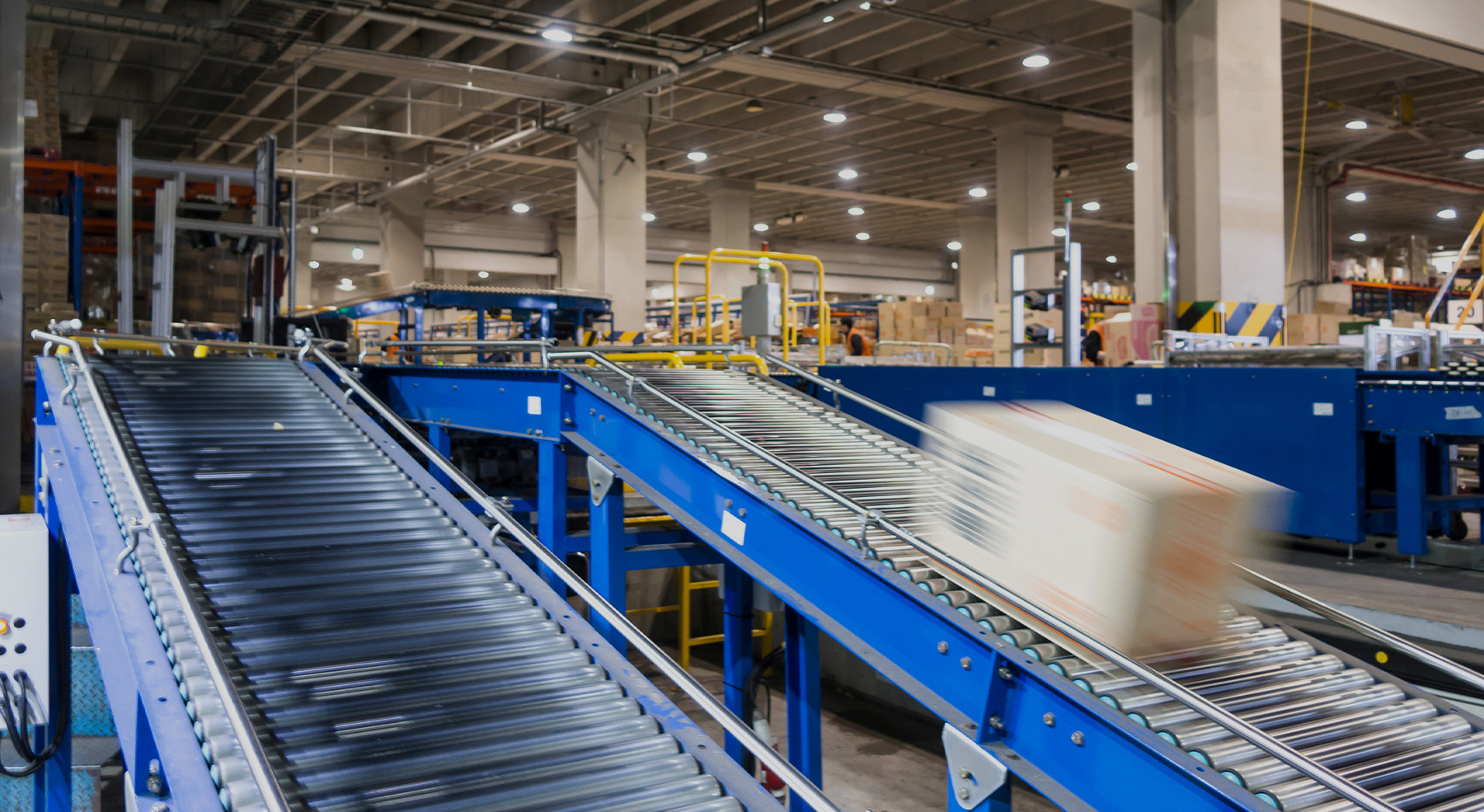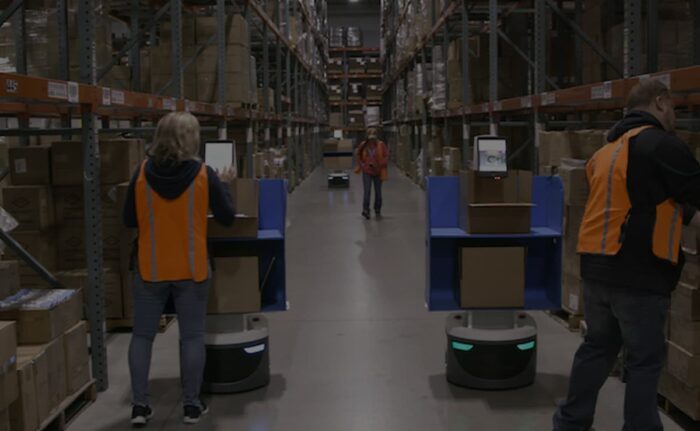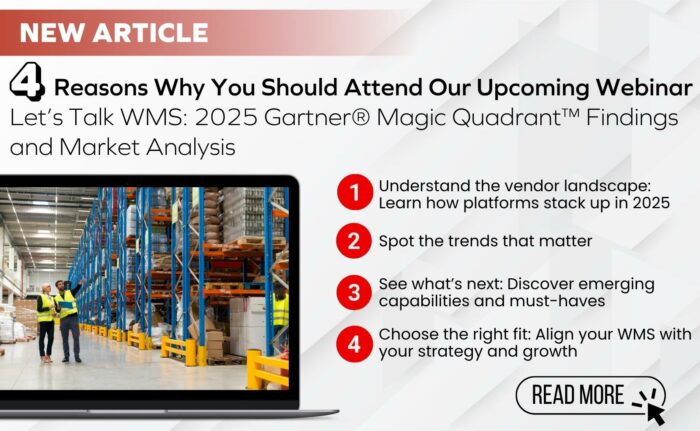
Recent research indicates that up to 80% of warehouses today have no automation at all. While there may be various factors contributing to this low adoption rate, it is evident that many warehouses struggle with knowing where to start their 3PL automation process. Given the costs, complexities, and options available, it is crucial to determine the right automation solutions that align with your operation’s specific needs and tech stack, including your 3PL WMS.
To shed light on the importance of automation and offer guidance on implementation, we sought the following insights from industry experts:
- What is 3PL warehouse automation?
- How can 3PL automation be used effectively?
- Benefits of 3PL automation
- How to implement 3PL automation
What is 3PL Warehouse Automation?
3PL warehouse automation is technology, hardware, robotics, solutions, and more that can increase the efficiency, safety, productivity, and cost-effectiveness of a 3PL operation.
In fact, 3PLs that use automation to improve their processes are extremely attractive, since potential customers can benefit from the technology and hassle-free 3PL management, without having to make investments in it or be experts on it.
3PL order fulfillment for e-commerce orders, for example, is a category that can benefit greatly from 3PL automation and robotics. According to Michael Sawyer, Senior Project Manager at enVista, “E-commerce profiles are typically small and very applicable to automation concepts. Many 3PL companies have developed partnerships with autonomous mobile robotics (AMR) companies such as 6 River Systems, Locus, and Fetch, which means this type of technology can be utilized by smaller customers to scale with their growth. This allows these companies to streamline processes such as picking, packing and manifesting to reduce cost per order. And, leveraging a 3PL reduces the cost of the automation to the e-commerce company and minimizes capital investment as the costs are embedded into the contract.”
How Can 3PL Automation Be Used Effectively?
Jim Chamberlain, Senior Managing Director at Alpine Supply Chain Solutions, suggests a variety of options for how 3PL automation can be used effectively:
- Cartonization: Picking eaches directly into the appropriately sized shipping carton and by-passing pick to tote minimizes touches, worker decisions, dunnage, and most importantly, shipping costs.
- Automated Material Handling: Whether it is conveyance, co-bots, Automated Guided Vehicles (AGVs), or other means, it is critical to minimize worker travel time by bringing products to them. In typical non-automated operations, travel can comprise over 60% of task time, which is all non-value-added time.
- Pick-to-Light: Visually directing the worker to the correct location, item, and quantity, while allowing them to keep their hands-free increases productivity, accuracy, and safety.
- Item Attributes: Ensuring every SKU within your operation has accurate dimensions and weight is critical to eliminating manual processes within an e-commerce operation. The ability to rely on system information eliminates rework, checking functions, and incorrect user decisions. Technology enabled by accurate item attributes includes in-line weight verification, carton erectors, and print-and-apply equipment.
Benefits of 3PL Automation
There are many benefits of adding robotics and automation to your 3PL, including optimizing manual labor and improving the associate experience.
3PL Automation Benefit #1: Decreases Reliance on Labor
Drew Eubank, EVP and Co-Founder at Zion, emphasizes the essential nature of automation, “I think automation is essential. The great thing about Covid was it fast-forwarded our industry probably 10 years in three months. Because people realized you can’t just depend on labor anymore.”
However, Eubank also cautions that automation is not a one-size-fits-all solution. It is important to consider this when researching the most suitable system for your operation. “I do think there has been a tendency to gravitate toward the most automated solution rather than the right automated solution,” he adds, pointing out that such an approach may not be ideal for your specific needs.
Raumi Sidki, a staff robotics engineer from Robust.AI, notes, “It’s a problem of uniqueness. Many automation and robotic solutions excel in well-structured environments with low variability.” But for operations that change often and require flexibility, automation may make it hard to maintain a high level of efficiency, so detailed and forward-thinking planning is critical.
3PL Automation Benefit #2: Improves the Associate Experience
Autonomous Mobile Robots (AMRs), for instance, have gained considerable attention for their ability to increase productivity and reduce downtime, thereby providing a quick return on investment. However, Steve Simmerman, Head of Global Alliance at Locus Robotics highlights the unintended benefits AMRs are providing, where AMRs are, “collaborating with the associate on the floor, and making their work life safer, easier, and more enjoyable.”
Sidki takes this notion further, stating, “As an industry, it is crucial that we focus on building solutions for robots that work with people, not just for them.” Simmerman corroborates this, reporting that employees who work alongside bots in specific zones find their work more efficient, and customer feedback indicates that bots improve engagement, job satisfaction, and reduce turnover. Given the labor challenges faced in recent times, using automation to enhance employee quality of life proves to be a worthwhile tactic.
How to Implement 3PL Automation
To successfully implement automation in your operation, it must be built on a strategic foundation. Thru-Put Partners Project Executive Kevin Hume says, “It’s important to have that strategic vision to determine what the five-year plan is, and then tactically, what are the pilot initiatives that can be leveraged incrementally along the way to leverage automation to be able to be successful to hit that long-term strategic goal.” Of course, having a plan is critical in every industry, but that’s especially true when it comes to making large financial investments that could impact an operation’s longevity.
Hume suggests starting your 3PL automation journey by looking at three key areas:
- Labor. “What are you trying to mitigate by using autonomous, mobile robots?” asks Hume.
- Quality. “Quality has a big impact relative to customer service and the cost of looking at mistakes and any issues the warehouse team has to recover from,” explains Hume. “Look at opportunities [to use automation and robotics] for that quality savings.”
- Innovation gaps. “Areas where we can improve the scalability of the operation [are a great fit for automation],” said Hume. “When it comes to innovating, consider the types of automation and timeline. How long will you be providing value for the operation?”
Test-driving different automation tactics before fully deploying one within a 3PL operation is critical. Howard Turner, Director of Supply Chain Systems at St. Onge, recommends a, “proof of concept approach to testing out automation. Start with a specific use case – looking at automation in a small portion of the operation to make sure it works in their business.” Should that test prove successful, the next step can be taken to expand automation to other sectors of the operation. It’s important to remember that automation is not a one-size-fits-all approach, which is why testing is so valuable.
For more tips on implementing robotics and automation in your 3PL warehouse, check out, “Beyond the Buzz: Practical Insights into Robotics for Omnichannel Fulfillment.”
You might also like our answer to the question, “What is a 3PL warehouse management system?” here.


